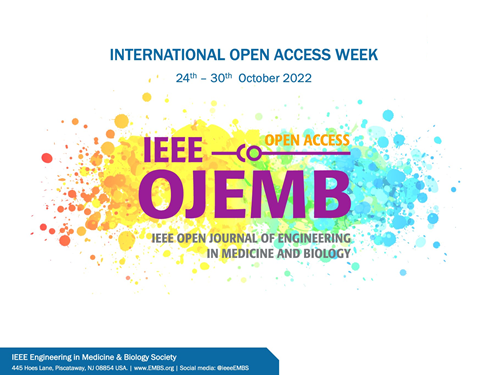血管老化过程中动脉顺应性的分数阶建模:研究心血管动力学的计算生物力学方法
IF 2.7
Q3 ENGINEERING, BIOMEDICAL
IEEE Open Journal of Engineering in Medicine and Biology
Pub Date : 2023-12-14
DOI:10.1109/OJEMB.2023.3343083
引用次数: 0
摘要
目标:本研究旨在探讨分数阶微积分在人体血管老化动脉顺应性建模中的应用。方法:我们提出了一个包含分数阶电容(FOC)元素的新型分数阶修正动脉 Windkessel 模型,以捕捉动脉顺应性的复杂和频率依赖特性。通过使用从三个不同人体收集的数据对模型的性能进行了评估,重点是主动脉压力和流速。结果显示结果表明,FOC 模型准确捕捉了动脉顺应性的动态变化,为估算中心血压分布和动脉僵化提供了灵活的方法。结论这项研究证明了分数阶微积分在推进人体血管老化中动脉顺应性的建模和表征方面的潜力。所提出的分数阶微积分模型可以提高我们对与衰老相关的动脉顺应性生理变化的认识,并有助于确定潜在的老年心血管疾病干预措施。本文章由计算机程序翻译,如有差异,请以英文原文为准。
Fractional-Order Modeling of Arterial Compliance in Vascular Aging: A Computational Biomechanical Approach for Investigating Cardiovascular Dynamics
求助全文
通过发布文献求助,成功后即可免费获取论文全文。
去求助
来源期刊

IEEE Open Journal of Engineering in Medicine and Biology
ENGINEERING, BIOMEDICAL-
CiteScore
9.50
自引率
3.40%
发文量
20
审稿时长
10 weeks
期刊介绍:
The IEEE Open Journal of Engineering in Medicine and Biology (IEEE OJEMB) is dedicated to serving the community of innovators in medicine, technology, and the sciences, with the core goal of advancing the highest-quality interdisciplinary research between these disciplines. The journal firmly believes that the future of medicine depends on close collaboration between biology and technology, and that fostering interaction between these fields is an important way to advance key discoveries that can improve clinical care.IEEE OJEMB is a gold open access journal in which the authors retain the copyright to their papers and readers have free access to the full text and PDFs on the IEEE Xplore® Digital Library. However, authors are required to pay an article processing fee at the time their paper is accepted for publication, using to cover the cost of publication.
 求助内容:
求助内容: 应助结果提醒方式:
应助结果提醒方式:


